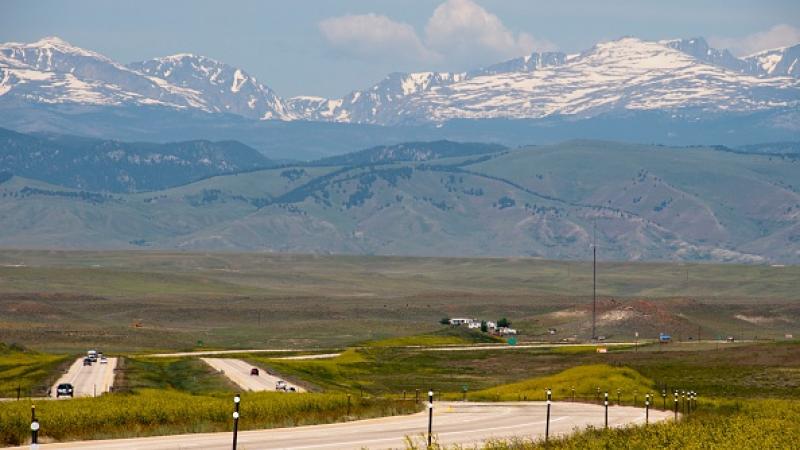Environmentalists’ war on infrastructure hurt LA County firefighting and environment, critics say
Billions of gallons of water that could have helped battle the Palisades Fire went into the Pacific Ocean. Firefighters have found fire hydrants empty, leaving them without resources to put out the blaze.
The wildfires in Pacific Palisades and others in Los Angeles County have burned over 37,000 acres and caused at least 13 deaths. While legacy media outlets are predictably blaming climate change, experts are pointing out that meteorological factors, poor land management, urban sprawl, are much larger contributors to the disaster than any changes in the climate.
While the exact causes won’t be determined for some time, inadequate water infrastructure has hampered efforts to fight the fires. Environmentalists have been fighting the building of water infrastructure, and they’ve carried out a successful campaign to remove dams across the U.S. Besides having their own detrimental environmental impacts, these actions can have far-reaching consequences.
Empty hydrants
Dr. Matthew Wielicki, former assistant professor in the Department of Geological Sciences at the University of Alabama, explained on his “Irrational Fear” Substack that the past two years have been some of the wettest in a century for California, but the state lacked the water storage capacity to capture it. Billions of gallons of water that could have helped battle the Palisades Fire went into the Pacific Ocean. Firefighters have found fire hydrants empty, leaving them without resources to put out the blaze.
Journalist Keely Covello wrote on her “America Unwon” Substack that environmentalist opposition to water infrastructure is also hurting agriculture in California.
“For years, politicians slashed water allotments and shut off ag pumps to farmers in an effort to save a finger-length, minnow-like fish called the Delta Smelt. When President Trump took office, he said California should consider updating its water infrastructure so farmers could grow crops and cities didn’t have to burn to the ground over a minnow. This enraged Democrat activists. Their righteous indignation fueled many think pieces about the Delta Smelt,” Covello wrote, adding that the efforts did nothing to save the Delta Smelt fish population.
Dam breaching
Environmentalists are also pursuing an effort to breach dams across the U.S. anti-dam activist group American Rivers boasts that it and other groups successfully destroyed 80 dams in 2023, which was up from 65 the previous year.
In Maine this month, local, state, and national conservation groups banded together to launch Free The Andro Coalition, which is backed by American Rivers. The group argues that fish ladders installed on the Brunswick-Topsham Dam on the Androscoggin River, which flows through Maine and New Hampshire, haven’t been effective. They are demanding the owner make changes or remove the dam.
Opponents of dam breaching argue that, contrary to environmentalists claims, the fish ladders are effective. Journalist John Stossel argues in a video critical of the plans to breach the Snake River dams that fish populations on the Snake River are higher today than they were in the 1980s and 1990s, which follows the implementation of the fish ladders, according to University of Washington data.
Gabriella Hoffman, policy analyst with the Committee for a Constructive Tomorrow, says in another video on the Snake River dam issue that, besides ignoring the positive impacts of salmon mitigation efforts on the dams, environmentalists aren’t looking at broader impacts of dam removal.
Hydroelectric dams, Hoffman says, provide abundant carbon-free energy and are a boon to local economies. Todd Myers, environmental director at the Washington Policy Center, a market-oriented think tank in Seattle, said that 70% of Washington’s energy comes from hydroelectric, which is cheap and flexible, meaning it can be ramped up and down as needed. The removal of the dams will destabilize the grid and drive up electricity rates.
Wreaking havoc
Starting in summer 2023, four dams on the Klamath River, a 257-mile long river in southern Oregon and Northern California, were removed as part of an effort to restore fish populations. The project was the largest dam removal project in U.S. history, and it was completed this year.
Rather than restore salmon populations, the removal created a sediment plume that extended two miles into the Pacific Ocean, reportedly killing large amounts of fish in the river, and impacting other wildlife in the area.
Siskiyou County Supervisor Ray Haupt told Just the News that the fish populations are at record lows as of January.
“Was it some ocean condition or was it mortality in the river?" he asked. "I know there was mortality in the river, but time is going to tell."
Haupt said that increasing habitat for the salmon, which is the goal of the dam breaching, is only part of the issue.
“You have to have returners to occupy that habitat, and then you have to have the number of sufficient offspring every year that are in that habitat to be able to increase the population over time. Unfortunately, though, all the focus has been on increasing habitat without looking at the other detractors that may be suppressing the population,” he said.
The dams also provided flood attenuation, which Haupt said, slowed down the release from the upper basin. Then they could wait for the flood periods to crest on the rivers on the lower end of the system. That would moderate the intensity of the flooding downstream.
With the dams gone, the Siskiyou County planning department has been trying to get new flood plain maps from the Federal Emergency Management Agency, which told department official that the agency won’t know where the flood plain is for at least three to five years.
This causes “havoc for building permits and zoning and all kinds of other things along the river. That's what we're wrestling with right now, especially with the fires that we've had where people are trying to rebuild along the river, but we can't tell them where the flood plain is, and their insurance company doesn't know whether they're in flood plain or out of flood plain,” Haupt said.
While dams and other water infrastructure can impact aquatic life, critics say environmentalists impeding the building of infrastructure or the destruction of infrastructure aren’t considering the benefits that come from water storage, hydroelectric power and irrigation.
The U.S. has nearly 92,000 dams, most of which were built 100 years ago. We may have to destroy many of them to remember why they were built in the first place.
The Facts Inside Our Reporter's Notebook
Videos
Links
- predictably blaming climate change
- meteorological factors
- poor land management
- urban sprawl
- inadequate water infrastructure
- own detrimental environmental impacts
- Irrational Fear
- found fire hydrants empty
- America Unwon
- American Rivers
- 80 dams in 2023
- 65 the previous year
- fish ladders
- demanding the owner
- John Stossel explains in a video
- Washington Policy Center
- created a sediment plume
- killing large amounts of fish in the river
- most of which were built 100 years ago















